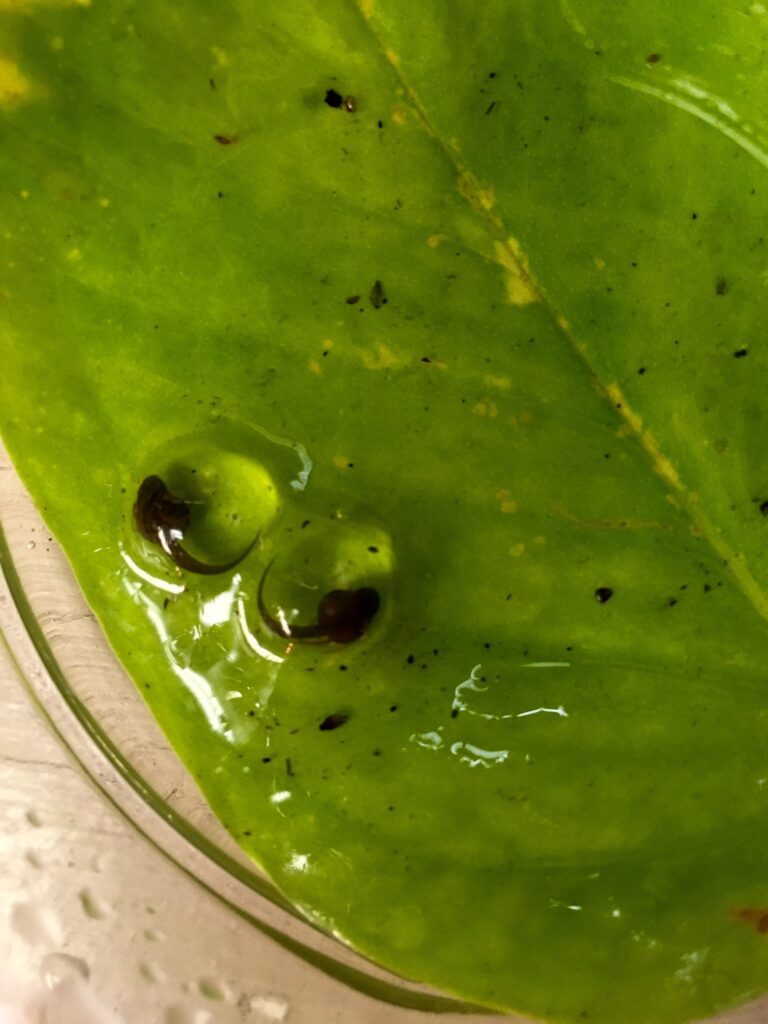There are many tasks associated with the care of animals, and zoo keepers are on a lifetime journey of learning many details of animal husbandry. Some seem quite obvious, like giving food and water, or cleaning habitats. Other husbandry details are learned by researching the natural history of these species, or even better yet, observing them in their natural range. Usually, all of the minute husbandry details are put together after having multiple successes and failures.
One such husbandry detail became a major breakthrough for us as we raised many Eastern ribbon snakes years ago. Ribbon snakes are live-bearers (as opposed to egg-laying), and as soon as we would see breeding behavior, we would carefully observe the female to see if she started to gain weight. When she would gain over 20% of her body mass, we knew she was gravid (pregnant). When the young were born, they were just over 15 centimeter (6 inches) in length and had a girth of less than one centimeter. At that size, finding food items small enough for them to eat was difficult. In their natural range, ribbon snakes usually feed on tadpoles and leeches, as well as other small vertebrates and invertebrates, which is not practical at the Zoo, so we decided to try small smelt cut into 1 centimeter cubes. The snakes were always interested, but never seemed to eat them.
After observing for an extended period of time after offering the cut smelt, I could finally see the problem. We had been offering the smelt on a rock in the snakes’ terrarium, but by the time they had gotten to it, it was stuck so hard to the rock that they were not able to lift it off. We decided to offer the smelt on a petri dish with just a small amount of added water to keep it from sticking. Success! They started eating right away and suddenly we were better at breeding and raising Ribbon snakes than ever before.We’ve had many similar ‘wins’ with husbandry techniques recently. A few months ago, our yellow-banded poison dart frogs started calling. I knew that these males were looking for females to breed with and hoped we would get some eggs. These frogs would need cupped leaves or fallen bark to hold the water to lay their tadpoles in. We decided to try leaves from the larger trees in the aviary, but were unsuccessful with this technique. We decided to try deli cup lids placed in the habitat, and the frogs were definitely interested in them, but something wasn’t right. They were not depositing eggs in them. So, I thought it might be nice to give them a little more privacy, adding a ‘C’ shaped piece of bark over the top of the deli cup lid to give them some protection.
Since then, they have been regularly laying eggs into the lids. The lids with eggs are pulled to the frog room and kept moist until the eggs hatch, which can be up to two weeks. Once the eggs hatch, the tadpoles are moved into separate deli cups and raised with small algae rocks for grazing and some fallen pothos or ficus leaves for cover.
I’ve honed the process of noticing the small things over the years by taking the time to observe the animals in human care, as well as observing animals in their natural range. These experiences don’t necessarily have to be exotic: I have been lucky enough to travel to Panama and work with wild tropical amphibian populations, but most of my amphibian experience has come from spending many of my younger years flipping rocks and logs in the Finger Lakes region, discovering frogs and salamanders. Surprisingly, the rocky streams of Canadice Lake are not all that different from the bigger boulder streams of Central Panama.
The journey of learning about all of these unique details and making the necessary husbandry changes for the animals in our care is what I love most about my job. Taking moments to observe animal behavior, and giving them the habitat and environmental conditions to accommodate these behaviors, is what sets modern zoos apart from zoos of the past.– John Adamski, Assistant General Curator








